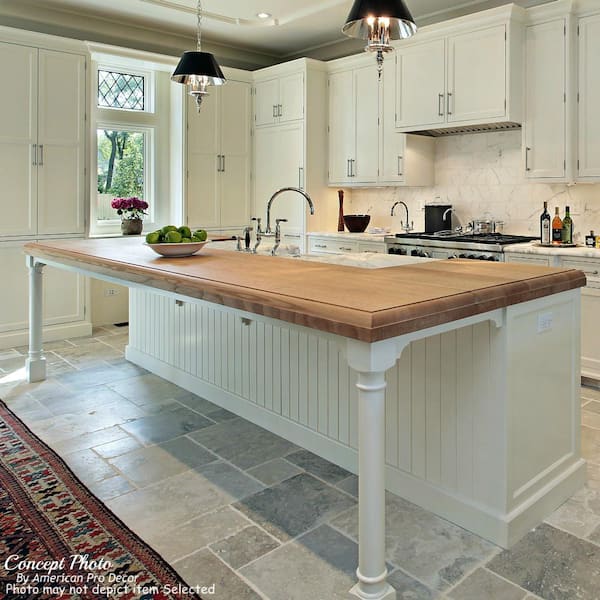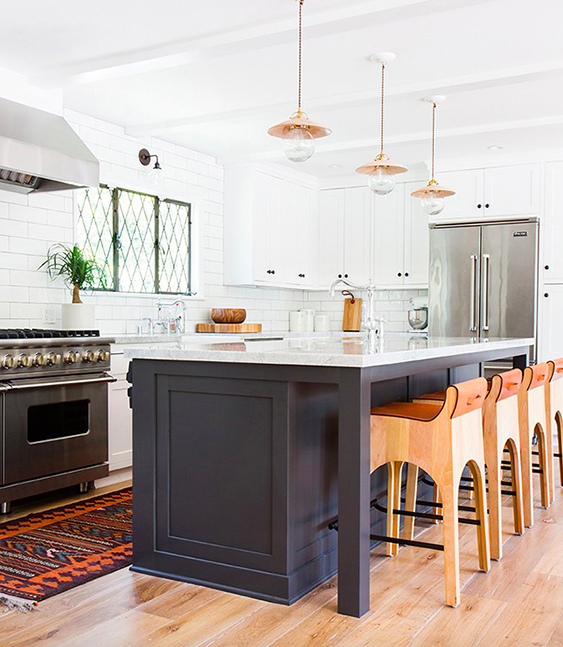Fashionable Kitchen Island Leg Ideas to Boost Your Kitchen Decor
Leading Considerations When Picking a Cooking Area Island Leg for Modern Kitchen Interiors
In the world of modern-day cooking area interiors, the option of a kitchen area island leg is crucial, affecting both looks and functionality. Key considerations include the selection of materials that integrate with modern style, in addition to the leg's stability and support to make certain long-lasting performance. Additionally, height and percentages must be thoughtfully reviewed to maintain a natural look. As these components intertwine, they increase better inquiries about exactly how to achieve the best balance in between style and usefulness, leaving one to consider the ramifications of each choice on the general kitchen experience.
Material Choices
When it comes to selecting a kitchen area island leg, product options play a vital function in both looks and capability. kitchen island leg. The most typical materials consist of wood, metal, and composite alternatives, each offering potential drawbacks and distinctive advantages
Wood is favored for its warmth and timeless allure, offering an ageless look that complements numerous cooking area designs. It is highly versatile, enabling customization in regards to coatings and shades. Nonetheless, timber may call for even more maintenance to avoid warping or damages from wetness.
Metal, on the various other hand, brings a industrial and contemporary flair to cooking area islands. Stainless steel and functioned iron are prominent selections, recognized for their toughness and resistance to put on. They can withstand the roughness of daily use but might do not have the warmth related to wood.
Composite products, such as engineered timber or synthetic blends, use a balance between rate, longevity, and aesthetics. These options are often created to mimic the look of all-natural materials while giving resistance to spills and scrapes.
Ultimately, the option of product should line up with the total kitchen design and meant usage, making sure that the kitchen area island leg is both functional and visually attractive.
Design And Style
The style and style of a kitchen island leg dramatically contribute to the overall aesthetic of the area, enhancing the chosen material. When choosing the leg layout, think about the building style of the cooking area. Streamlined, minimal legs made of stainless steel or acrylic harmonize with contemporary layouts, while ornate, turned wood legs boost standard or farmhouse aesthetics.
Additionally, the coating of the leg can affect the aesthetic influence; a sleek chrome or matte black coating might stimulate modern-day style, while distressed wood speaks to rustic charm. The leg's shape also plays a vital function-- directly, angular types convey a more commercial feeling, whereas bent or conical legs present a softer, more inviting appearance.
Integrating ornamental aspects, such as embellishments or makings, can add personality and character to the cooking area island, additional boosting its role as a centerpiece. Eventually, the picked leg style ought to not just straighten with the overall kitchen area layout but likewise mirror the property owner's individual taste, making sure that the kitchen island ends up being a practical and unified centerpiece within the contemporary kitchen area interior.
Elevation and Proportions
Attaining the right elevation and proportions you could try these out for a kitchen island leg is vital for both performance and visual appeals. Kitchen area islands normally range in height from 28 to 36 inches, depending upon their meant usage-- whether as a food preparation surface area, eating location, or office. Criterion countertop height is around 36 inches, making it essential that the legs you select enhance this elevation to provide a smooth, incorporated appearance.
Proportions additionally play a crucial role in the aesthetic equilibrium of the kitchen. A slim leg might be suitable for a minimalistic or modern island, while a much more substantial leg might be required for rustic or conventional styles.
When picking the elevation and proportions of the kitchen area island leg, remember the general design style of your cooking area. This focus to information not just enhances the functionality of the space but additionally adds to a aesthetically attractive and cohesive interior decoration.
Stability and Assistance
Constantly guaranteeing security and support in cooking area island legs is necessary for both safety and performance. A well-constructed cooking area island need to withstand everyday usage, including weight from devices, cooking, and celebrations. The option of legs should focus on robust products and designs that can supply sufficient support.
When evaluating stability, consider the leg's product-- hardwood, steel, or aluminum usually provide remarkable strength compared to lighter choices. In addition, the layout should feature a wide base to distribute weight equally and reduce the risk of wobbling or tipping. Legs created with an A-frame or cross-bracing can dramatically boost security.

Including these factors to consider will not only improve the general safety and security learn this here now of the cooking area area yet also enhance the long life and capability of the kitchen island, making it a beneficial centerpiece in modern-day kitchen area insides.
Completing Touches
When it involves finishing a cooking area island, thoughtful ending up touches can considerably improve both its visual appeal and performance. Picking the appropriate leg style is essential, yet complementing it with proper information can transform the whole space. Consider including attractive components such as toe kicks or baseboards that match the kitchen cabinetry or floor covering to produce a smooth appearance.

Lastly, the option of coatings plays a pivotal role in linking the design with each other. Whether choosing for a matte, glossy, or distinctive surface, make sure that it aligns with the overall style of your kitchen. A cohesive color scheme and material choice will raise the kitchen island, making it an exciting focal factor. By taking notice of these finishing touches, home owners can develop a cooking area island that is both gorgeous and practical, satisfying their way of living and layout preferences.
Final Thought

In the world of modern kitchen area insides, the choice of a kitchen island leg is pivotal, influencing both aesthetics and performance.The style and style of a kitchen island leg substantially add to the overall visual of the area, enhancing the chosen material.Accomplishing the ideal elevation and percentages for a kitchen area island leg is crucial content for both functionality and aesthetics.Consistently ensuring stability and support in kitchen island legs is essential for both security and functionality.In summary, selecting a cooking area island leg for modern insides calls for cautious factor to consider of product options, layout style, elevation, percentages, and stability.